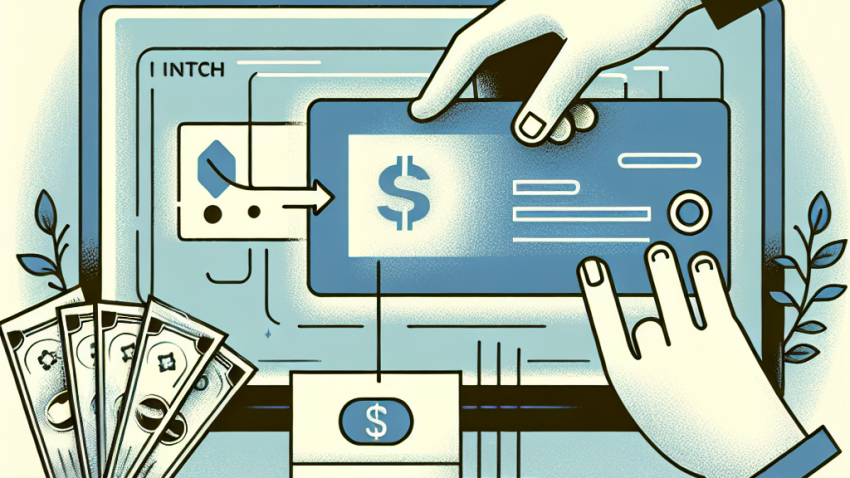
Why I Switched to Digital-Only Banking and Never Looked Back
Understanding Compound Interest: Why It’s Your Best Friend in Finance
Hello there, friends! Tom Bradley here — your friendly neighborhood finance nerd who believes everyone, yes even you, can master money with a little guidance, some caffeine, and maybe a spreadsheet or two. Today, let’s tackle one of my absolute favorite topics in personal finance — compound interest. Why favorite? Because it turns lazy money into working money. Think of it like a magical snowball effect… with dollar bills. Let’s dive in, shall we?
What Is Compound Interest (Really)?
Alright, let’s paint a quick picture. You deposit money into a savings account. That money makes a little interest over time. Then — plot twist — you earn interest on that interest. And then interest on THAT interest. And so on. That, folks, is compound interest.
The more time you give it, the more powerful it becomes. Albert Einstein supposedly called it the “eighth wonder of the world.” (Can’t confirm he actually said that, but let’s roll with it. It should be the eighth wonder.)
Simple vs. Compound Interest: The Big Difference
To underscore how amazing compound interest is, let’s do a quick comparison with its not-so-glamorous sibling: simple interest.
- Simple Interest: Only earns returns on the original investment (a.k.a your principal).
- Compound Interest: Earns returns on both the original investment AND on the accumulated interest over time.
So while simple interest earns a flat amount each period, compound interest accelerates — like a financial rocket that gets faster the longer it flies.
How Does Compound Interest Work?
Let’s simplify this with a handy formula (don’t worry, we won’t get too math-y):
A = P (1 + r/n) ^ nt
- A = Total value (future value)
- P = Principal investment
- r = Interest rate (decimal)
- n = Number of times interest is compounded per year
- t = Time (in years)
Now, I know math formulas can make your eyes cross, but stay with me. The key takeaway: the more time you let your money sit and the more frequently it compounds, the more you earn.
A Friendly Scenario
Let’s say Rachel (age 25) decides to invest $1,000 at a 7% interest rate, compounded annually. She doesn’t touch it for 40 years. Here’s how that plays out:
- Principal: $1,000
- After 40 years: $14,974.46
That’s nearly 15 times her original investment — just by being patient and letting compound interest do the heavy lifting. Rachel didn’t even add more money after her first deposit!
Why Compound Interest Favors the Young
If you’re in your 20s or 30s, congrats. Time is on your side, and that’s the most crucial ingredient when it comes to compound interest. The earlier you start, the less money you have to invest to see big results. That’s why I always tell beginners: Start small, but start now.
The Cost of Waiting
Let me show you what I mean. Meet Sam — he’s 35 and just now opening a retirement account. He invests the same $1,000 at the same 7% rate. After 30 years, he ends up with around $7,612.25.
Compare that with Rachel’s $14,974.46, and you see the power of that extra decade. Compound interest rewards early birds in the finance world.
How Can You Use Compound Interest to Your Advantage?
Now that you’re properly excited about compound interest (I hope!), here’s how you can put it to work for your future:
1. Open High-Interest Savings Accounts
Look for savings or money market accounts that offer solid interest rates. Online banks tend to offer better rates than traditional brick-and-mortar ones. The more you earn on your balance, the faster it compounds.
2. Start (and Stick With) Retirement Accounts
Accounts like a 401(k) or Roth IRA are golden compounding machines — especially when paired with employer matches or tax advantages. Drop in a little each month, and watch the magic build.
3. Reinvest Your Earnings
Got dividends? Don’t cash them out yet. Reinvest them and let them serve as compound fuel. If you’re using a brokerage account, check the box for “DRIP” — Dividend Reinvestment Plan.
4. Be Consistent (Even If It’s Small)
You don’t need to be Warren Buffett. Even $50 or $100 a month can grow impressively over time. The real trick is consistency. Set it. Forget it. Let it work.
5. Avoid Unnecessary Withdrawals
Every time you withdraw, you’re not just taking out money — you’re taking soldiers off the compound interest battlefield. Let the troops stay in formation. Your future self will say, “Thank you kindly.”
The Flip Side: Compound Interest Can Work Against You
I hate to be the bearer of bad news, but compound interest isn’t always your best buddy. If you’re carrying credit card debt or high-interest loans, it’s compounding in reverse — against you.
Bad Compound Interest: Credit Cards
That $2,000 balance at 20% interest? If you’re paying only the minimums, it could easily balloon to double that amount over time. Compound interest doesn’t care who you are. If you ignore it, it can quietly grow into a mountain of debt.
Final Thoughts from Tom
Compound interest is like planting a financial tree. It takes a bit to sprout — but give it time, and it becomes massive, shading future generations. It rewards patience, consistency, and just a little bit of financial smarts (which you’re clearly working on by reading this!).
Start early, stay steady, and don’t panic if the numbers seem small. With compound interest, you don’t have to sprint to wealth — you simply let time and strategy do the legwork. Smart, steady, and maybe even sipping a cup of tea. That’s my kind of investing.
Got questions or want to know how to choose your first savings or investment vehicle? Take a peek at our About Us page or Contact Us. We’re real humans, and we’ve all been where you are now.
Until next time — stay curious, stay consistent, and let compounding take the wheel!









Leave a Reply